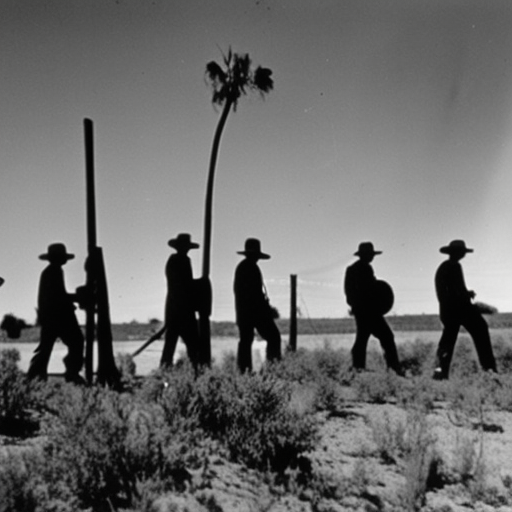The Bracero Program (1942-1964)
The Bracero Program was a guest worker program established between the United States and Mexico from 1942 to 1964. It allowed Mexican laborers, known as braceros, to work in the United States temporarily to address labor shortages during World War II and beyond. The program had a significant impact on both countries, shaping immigration policies and labor relations.
Background:
During World War II, the United States faced a shortage of agricultural workers due to the draft and the war effort. At the same time, Mexico had an excess of agricultural laborers. In response to these needs, the United States and Mexico signed the Mexican Farm Labor Agreement in 1942, which initiated the Bracero Program. The program aimed to provide temporary employment opportunities for Mexican workers in the U.S. agricultural sector.
Program Structure:
Under the Bracero Program, Mexican workers were recruited and contracted to work in the United States. The U.S. government guaranteed fair wages, housing, and transportation for the braceros. The contracts specified the duration of employment and the wages to be paid. The program initially focused on agricultural labor but expanded to include other industries such as railroad construction and mining.
Impact on the United States:
The Bracero Program had a profound impact on the United States, particularly in the agricultural sector. It provided a reliable and inexpensive source of labor for American farmers, ensuring the continued production of crops. The program helped stabilize the agricultural industry and contributed to the economic growth of the United States during and after World War II.
However, the program also faced criticism. Some argued that braceros were exploited, receiving lower wages and working in poor conditions. There were instances of braceros being subjected to discrimination and abuse. These concerns led to increased scrutiny and calls for reform.
Impact on Mexico:
The Bracero Program had significant consequences for Mexico as well. It provided an outlet for surplus labor and helped alleviate unemployment in rural areas. Remittances sent by braceros to their families in Mexico became an important source of income for many households. The program also fostered economic ties between the two countries and contributed to the development of Mexico’s agricultural sector.
However, the program also had negative effects on Mexico. The departure of a large number of agricultural workers disrupted local economies and led to the neglect of agricultural infrastructure. Some argued that the program created a cycle of dependency on the United States and hindered Mexico’s own agricultural development.
Legacy and End of the Program:
The Bracero Program lasted for over two decades, but it faced increasing criticism and controversy. Labor unions and civil rights organizations in the United States argued that the program depressed wages and exploited workers. In Mexico, there were concerns about the treatment of braceros and the impact on the country’s economy.
In 1964, the United States and Mexico agreed to terminate the Bracero Program. The decision was influenced by changing labor dynamics, growing opposition, and a desire to address the concerns raised by various groups. The end of the program marked a shift in immigration policies and labor relations between the two countries.
Conclusion:
The Bracero Program played a significant role in addressing labor shortages in the United States during World War II and beyond. It provided temporary employment opportunities for Mexican workers and helped stabilize the agricultural industry. However, the program also faced criticism for its treatment of workers and its impact on both the United States and Mexico. The program’s legacy continues to shape immigration policies and labor relations between the two countries.












